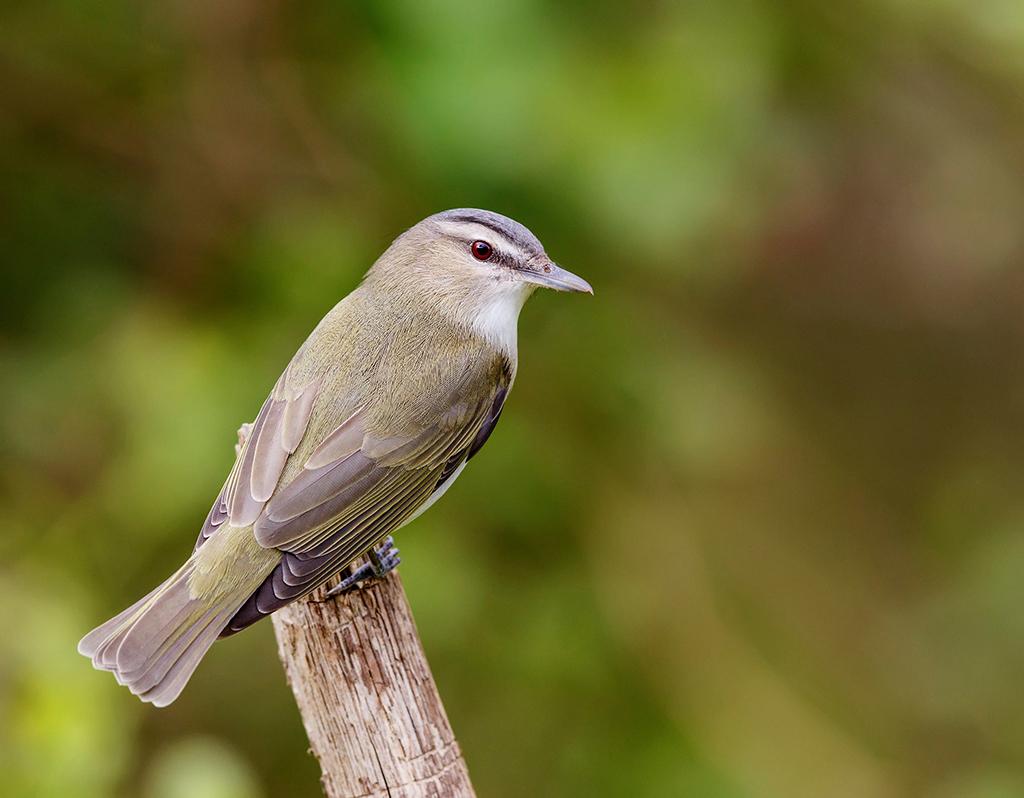Though located in one of the most populated regions of the United States, Shenandoah offers a richness of wildlife, from black bears and wild turkeys to owls and salamanders.

Red-eyed vireo, Shenandoah National Park / NPS file
Spend any time in the park and you'll see wildlife. White-tailed deer are easy to spot, black bears can be surprisingly easy to see, and, with almost 200 bird species, seeing something on the wing is very easy.
And with development continuing to expand on areas surrounding the park, Shenandoah is becoming something of a sanctuary for wildlife, according to park officials.
While there has yet to be a complete biodiversity inventory in the park, officials there say that along with the more than 200 species of birds, Shenandoah is home to more than "50 species of mammals, 51 reptile and amphibian species, and 41 fish species."

Subadult black bear, Shenandoah National Park / NPS file
Among the rare birds that you might spot in the park is the Cerulean warbler, which, Shenandoah biologists say, "was once one of the most abundant breeding birds in the lower Mississippi valley. Unfortunately, their numbers have been declining due to loss of habitat. Though fewer in number, the Cerulean warbler can still be found in Shenandoah National Park."
While you might not always seen a specific animal in the park, you often can see traces of their existence in the form of tracks or scat, or even hear them, as was the case in 2010 when I heard an owl hooting in the night.
One animal you hopefully won't encounter close up is the striped skunk that makes its home in Shenandoah.
With the park's diversity of wildlife, Shenandoah officials ask that you keep in mind some things when it comes to viewing or photographing birds and animals in the park:
* Maintain your distance from animals, particularly large animals (preferrably 200 feet or more). If the animal moves closer to you, move away slowly.
* Never approach an animal for that “perfect shot or view”. Use telephoto lenses, binoculars, or spotting scopes.
* Never deliberately move or position yourself in order to alter an animal’s movement or behavior
* Never surround an animal such that it does not have an escape route.
* Never entice an animal into a preferred pose with food or garbage.
* Be considerate of the interests of others who may be observing or photographing the animal.
* Many animals are more active at night and are more readily seen in the early morning and late evening. This can be a hazardous time for driving. Many collisions with wildlife occur because they are foraging close to Skyline Drive. Visibility is reduced and many drivers do not pay as close attention to driving – instead they are looking for wildlife. Be careful.
* Development of “bear jams” or “wildlife jams” on park roads is common when many visitors in motor vehicles spot wildlife close to the road. Be particularly cautious in these areas as drivers and pedestrians alike are focused on the wildlife not on moving motor vehicles. Remember – if you want to view wildlife along Skyline Drive, make sure you pull your car completely off of the paved surface.
* Dispose of garbage properly."





